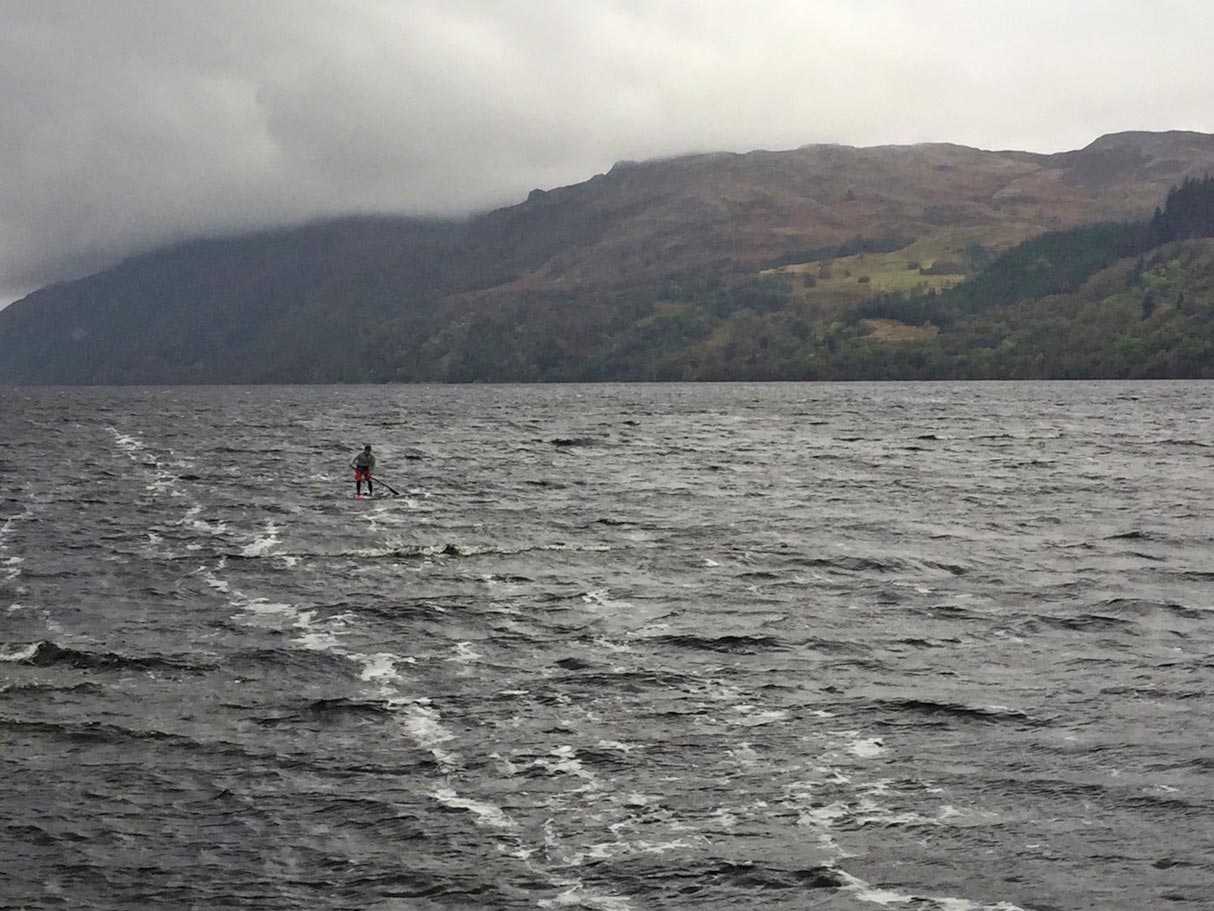
Bart de Zwart Ticks Another ‘Ultra’ off His List, Wins the 92km Great Glen Paddle in Record Time
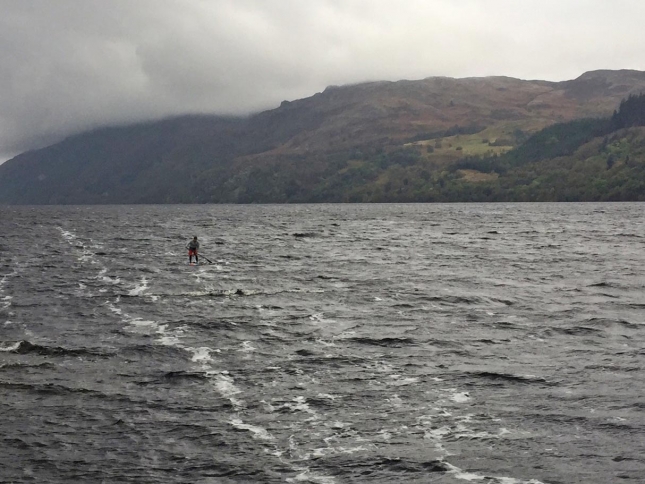
This year’s Great Glen Paddle turned into what is quite possibly the world’s longest ever downwind run…
Bart de Zwart has continued to cement his reputation as one of the craziest most inspiring paddlers in the world, taking out the 92km UK SUP Great Glen Paddle in Scotland last weekend and setting yet another ultra long distance race record in the process.
To put the race in perspective, Bart won in 10 hours 50 minutes, which was a record fast time for this course; some of the other paddlers were out there for 15 or 16 hours.
The Great Glen was the fifth stop on Bart’s six-race tour of the world’s longest stand up paddle races. He has now completed 1,795kms (1,115 miles) in just five races, for an extraordinary average of 359kms per race.
Read Bart’s race recap and insights below
While Bart got the record, there was an even more impressive, and certainly more inspiring performance in the field, with blind paddler Dean Dunbar successfully completing the entire course.
But the Great Glen Paddle, which includes a stretch of the infamous “Loch Ness”, almost didn’t happen this year, with the original organiser pulling the pin before Joanne Hamilton-Vale, herself a very experienced “ultra” paddler, came to the rescue and organised for a small but hearty band of soldiers to complete the course.
Joanne not only organised the race, she also competed and impressively finished second overall behind Bart. This is how Jo summarised the race to me:
“The Great Glen was tough and exciting, with 60 of the 92km offering solid downwind conditions on two of the Lochs — it was like paddling an ocean. The challenging part was doing 3 hours of it in the pitch black, but Nessie was kind and allowed us all to cross. All these competitors are amazing paddlers, and we all enjoyed the most beautiful background scenery. Certainly a tough paddle but totally worth it.”
The Great Glen is one of those races that is so much more than just a race. It’s an adventure. An adventure through a wild, rugged and very beautiful part of the world alongside your fellow paddling fanatics.
Here are the finishing times, and you can scroll down for Bart’s interesting recap and insights.
2016 Great Glen Paddle
1st: Bart De Zwart (10 hours 50 minutes)
2nd: Joanne Hamilton-Vale (11:38)
3rd: Phil Plume (12:41)
4th: Glen Parry, surfski (13:00)
5th: Tony Bain (13:56)
6th: Dean Dunbar (14:47)
7th: Allistair Swinsco (14:47)
8th: Tom Wakeford (16:38)
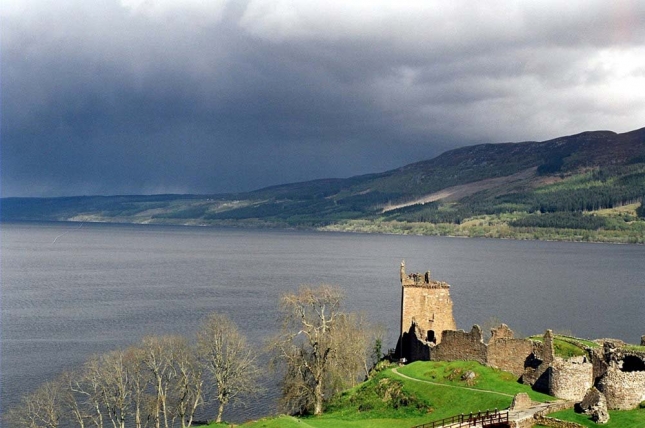
The infamous Loch Ness, home to the mystery of the Loch Ness Monster, served as the main crossing for the Great Glen Challenge
Bart’s Great Glen Recap
Scotland. The green mountains, the weather, and Loch Ness (and its monster) served as a great back drop for a spectacular SUP race: The Great Glen Challenge.
Unfortunately the original organizer canceled the event last month, but fortunately for us, fellow ultra long distance racer Joanne Hamilton-Vale and her husband Peter Vale took over, so I kept my flights and took my wife Dagmar on an adventure to Scotland.
With only a few weeks to organize and cold and windy weather in the forecast, only 10 paddlers showed up for the very early morning start. The course is 92km (57 miles), and the race record was 11 hours and 17 minutes set by Mark Slater the last time this event was held back in 2014.
We started at 3:30am in total darkness, with only the navigation lights on our boards and a faint glow from the disappearing moon behind the dark clouds to guide us.
I had studied the maps, and apart from the 40km crossing of Loch Ness lake, I hoped it would not be too hard to find the route, which is often a big part of the challenge in these “ultra” races.
The course consists of three main lakes, with canals in between that feature several locks where you must get out of the water and carry your board to the next canal. We would be paddling straight across Scotland from one side to the other, starting at Inverness on the North Sea side of the country and going all the way to the Irish Sea on the west coast.
Straight after the start, we quickly disappeared into the night. The first stretch was a 10km canal that led us to the beginning of Loch Ness. I was paddling on my Starboard Sprint 14×23 and didn’t know what to expect on the lake. The Sprint is a relatively narrow board designed for flat water, so if it was going to be windy at Loch Ness it would be a wild and tippy ride.
The water temperature on the lakes was cold (5-12 degrees or around 45 Fahrenheit). I was dressed light for racing so that I wouldn’t overheat; I wasn’t dressed for swimming but I had brought a thick survival blanket and extra jacket which was part of the required gear (also life vest, navigation lights, GPS tracker, leash). I opted not to take my SupSkin drysuit, but in hindsight that would have been the wiser choice.
I believe the GPS tracker is a great way for long distance races to keep track of competitors, and it is certainly a lot more environmentally friendly than having a support boat (like they do in Molokai where each paddler has to have their own escort boat).
I passed through the canal fairly quickly and arrived at Lake Loch Ness still surrounded by the dark of night. I turned off my front navigation light so I could see at least a shimmer of the water but it felt almost as if I had my eyes closed. At least I could see a vague contour of the mountains around the Loch so I could find my way to the end of the lake where the entrance of the next canal was.
The lake was about 40km long and after 30 minutes the wind swell coming from behind us really picked up and it started to be a proper downwinder. Being on my narrow board and seeing virtually nothing, this was not an easy task. And this is before you even consider a chance encounter with the famous Loch Ness Monster…
Fortunately for us, Joanne brought a bottle of whiskey as a peace offering to Nessie, which seemed to keep the beast calm and out of our way. So like many explorers before us, we didn’t sight the monster on our voyage.
Below: Den and Allistair finishing their downwind run across Loch Ness; up at the top of the page you can see a glimpse of Bart’s downwinder
I was trying my best not to fall in, so most of the good wind swells remained unridden for much of my crossing. But still I made decent progress, and after almost four hours on the lake the daylight slowly but surely began to appear.
Now that I was able to finally see the waves, I could ride them. I was still tippy but it was certainly a lot easier than trying to do a downwinder on a flat water board in the dark…
This is meant to be a rough race though, so it all seemed very fitting: It was a rough lake, surrounded by rough mountains and with rough weather. Before the race I had traveled with Dagmar through the Scottish Highlands and out to the islands, and I loved the rugged landscapes and harsh beauty of the nature in this part of the world.
My thoughts were often with the other racers. In the beginning I had spotted the lights of Joanne and Phil, but I thought mostly of Dean Dunbar, who is blind and was doing this whole race with the assistance of Allistair Swinsco, who guided him along the entire 92km route. Now that is a challenge.
After more than five hours, I reached the locks and canals on the other side of Lock Ness. I was relieved as I had passed the hardest part of the course without falling in and getting wet. Dagmar was supporting me and gave me some food and a fresh bladder of energy drink water as I walked the 750m portage between canals.
Two more sets of lock portages followed before we got to the next lake, Loch Oich, a small but beautiful lake featuring castle ruins. The weather was better than expected at this point; it was supposed to rain all day, and although it was dark and cloudy it was mostly dry. Windy and cold, for sure, but dry at least.
Of course this is all relative. By the standards of the Scottish Highlands, this was actually probably a good day. But for a Dutchman-turned-Maui-local, it was freaking cold.
After Loch Oich, there were a few more locks and portages before we got to “Loch Lochy”, which was another big lake at almost 20km across.
I was still feeling fit after 8 hours of paddling but I did start to feel my knees and legs aching, especially on the last half of this lake when it became a full on downwinder again. So I was glad when I finally got to the bottom of the lake, as there was just one more portage over the locks and then a straightforward 10km paddle down the canal to the finish.
During the final couple of hours I realized I could perhaps just do it under 11hrs if I kept pushing myself, which would break the two year old record set by Mark Slater.
Finally, after 10 hours, 50 minutes and 12 seconds of paddling through the cold and dark, I crossed the line at Fort Williams, getting a new record by just under half an hour.
Joanne came in at a very impressive 11 hours, 37 minutes, which broke the women’s record that she set herself a couple of years ago. Phil Plume came in third after just over 12 and a half hours, however the most impressive performance was from Dean Dunbar, who paddled blind but still managed a very solid sub-15 hour time.
After paddling for 4 hrs in the pitch black myself, I can only begin to imagine what Dean is feeling like every time he paddles. He’s a great athlete with an even greater spirit. Very inspiring.
So this was almost the final ultra long distance race of the year, with only the relatively “short” Chattajack race in Tennessee left to complete.
Big thanks to Starboard for the support and making fast, innovative and sustainable race boards, and also to Black Project fins, Supskin Drysuit, Patagonia, Maui Jim sunglasses, and most of all my beautiful wife Dagmar for everything.



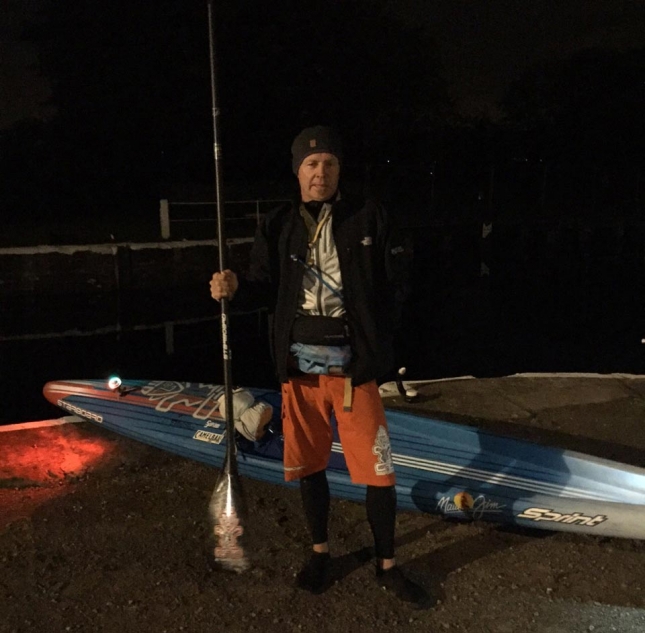
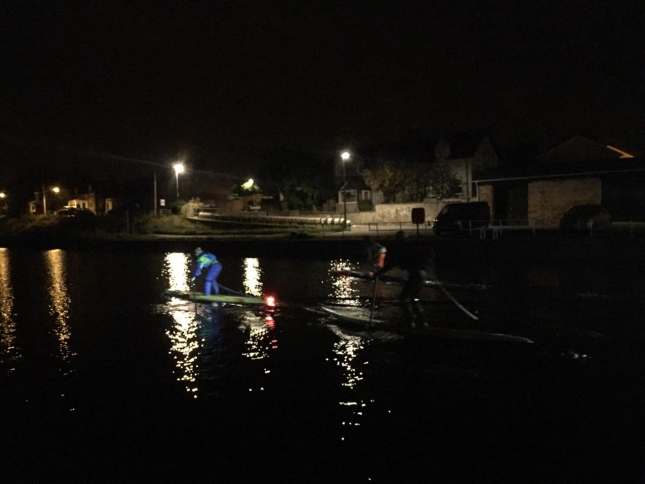
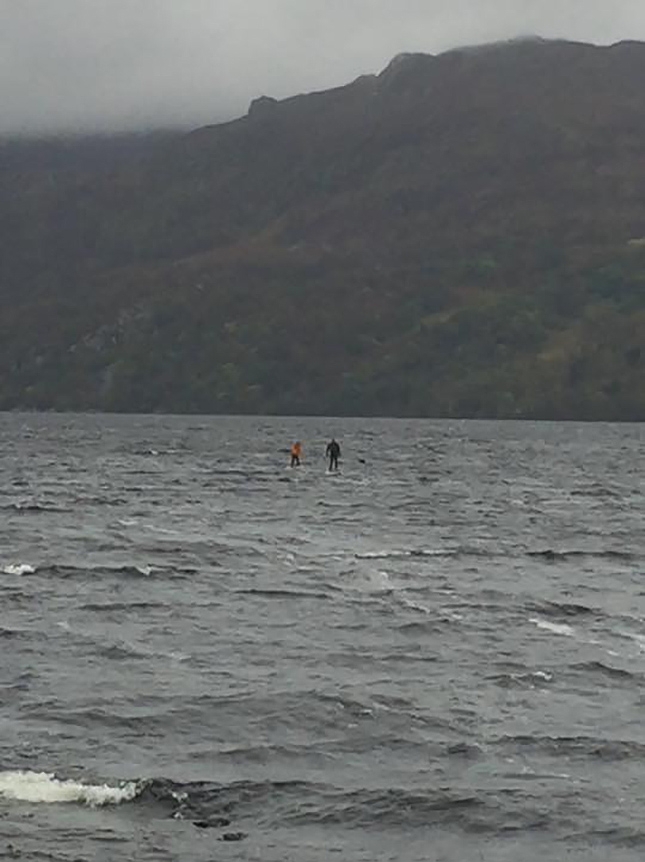
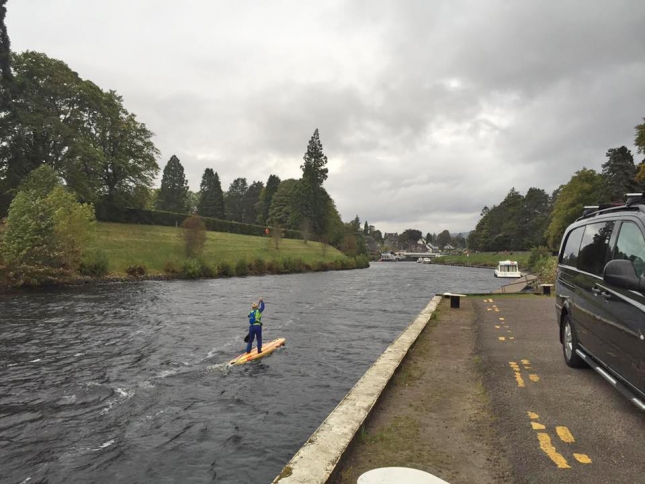
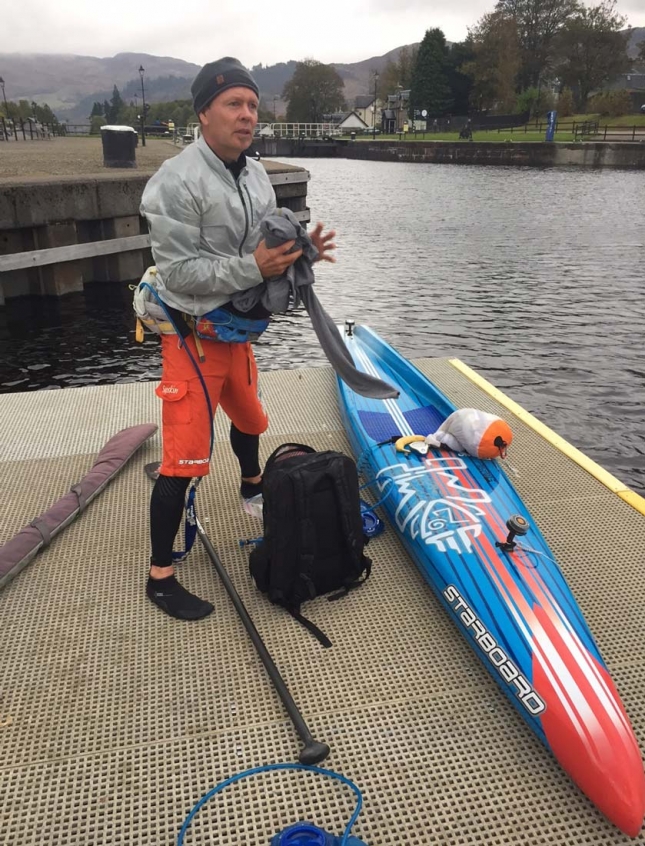
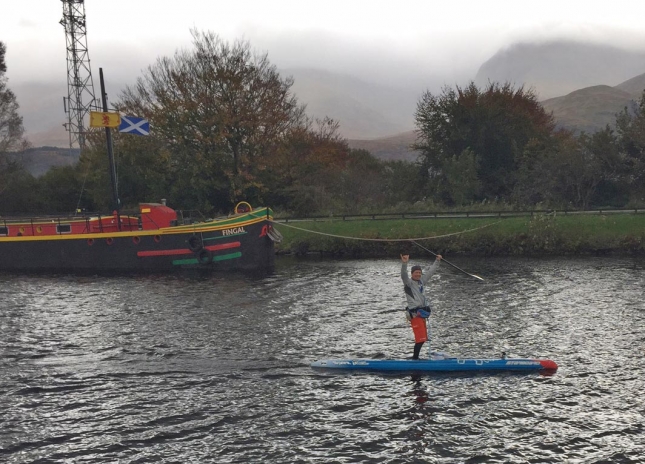
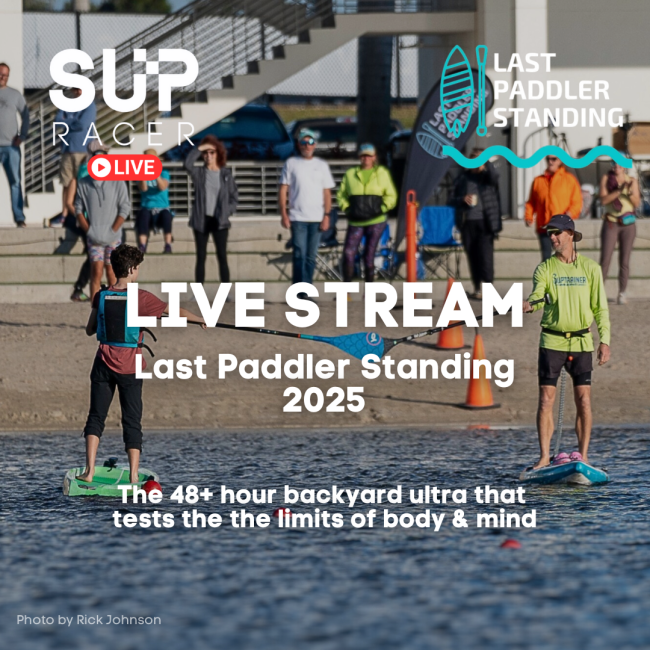
You must be logged in to post a comment.